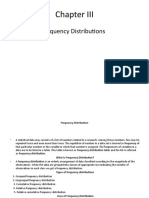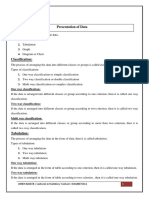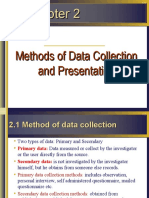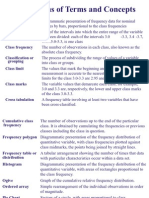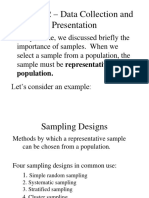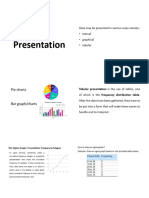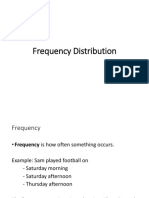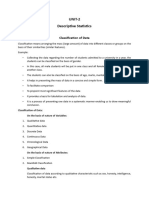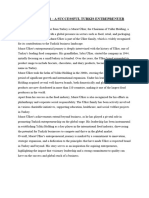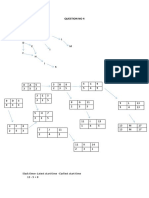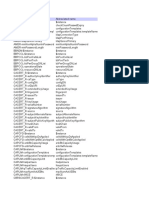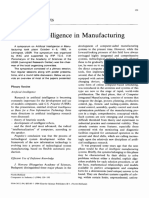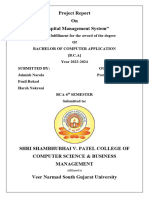BBA - 3 [PRESENTATION OF DATA]
Frequency Distribution:
A frequency distribution is a tabular arrangement of data in which various items are arranged
into classes and corresponding frequencies.
Ungrouped Data: (Raw Data)
Data collected from the field and which have not been arranged in a systematic order is called
ungrouped data.
Grouped Data:
Data arranged in a systematic order in the form of a frequency distribution is called grouped
data.
Class Limits:
The class limits are defined as the values of the variables, which explain the classes.
Class Boundaries:
The class boundaries are the exact values, which break up one class from another class.
Class Mark:(Midpoint)
The class mark or midpoint is that value which divides a class into two equal parts.
𝐔𝐩𝐩𝐞𝐫 𝐂𝐥𝐚𝐬𝐬 𝐋𝐢𝐦𝐢𝐭+𝐋𝐨𝐰𝐞𝐫 𝐂𝐥𝐚𝐬𝐬 𝐋𝐢𝐦𝐢𝐭
Class Mark = X =
𝟐
Size of Class Interval:(Class Width/Class Length)
Class length / Class width is the difference between the upper class boundary and the lower class
boundary. It is denoted by h or c.
Class Interval = h = Upper Class Boundary – Lower Class Boundary
Cumulative Frequency:
The total frequency of all classes less than the upper class boundary of a given class is called the
cumulative frequency of that class.
Cumulative Frequency Distribution:
A table showing the cumulative frequencies is called a cumulative frequency distribution.
Relative Frequency:
The frequency of a class divided by the total frequency is called the relative frequency of that
class.
Prepared By: Ms. AMARA NAZIR (Lecturer Statistics)
� BBA - 3 [PRESENTATION OF DATA]
Relative Frequency Distribution:
A table showing the relative frequencies is called a relative frequency distribution.
Graph:
A Graph is a diagram which shows the relationship between two or more set of numbers or
measurements.
Graphs of Frequency Distributions:
The important graphs of frequency distributions are as follows:
Histogram
Frequency Polygon
Cumulative Frequency Polygon / Ogive
Histogram:
A histogram consists of a set of adjacent rectangles with centers at the class marks and areas
proportional to the class frequencies.
Frequency Polygon:
A frequency polygon is constructed by plotting the class frequencies against their corresponding
class marks and then joining the resulting points by straight lines.
Cumulative Frequency Polygon: (Ogive)
A graph showing the cumulative frequencies plotted against the upper boundaries is called a
cumulative frequency polygon or ogive.
Diagram/Chart:
A diagram is a symbolic representation of information according to some visualization technique
Types of Chart:
The common types of frequency distributions are as follows:
Simple Bar Chart
Pie Chart
Simple Bar Chart:
A simple bar chart consists of horizontal or vertical bars of equal width.
Pie Chart:
A pie chart consists of a circle subdivided into various sectors.
Prepared By: Ms. AMARA NAZIR (Lecturer Statistics)
